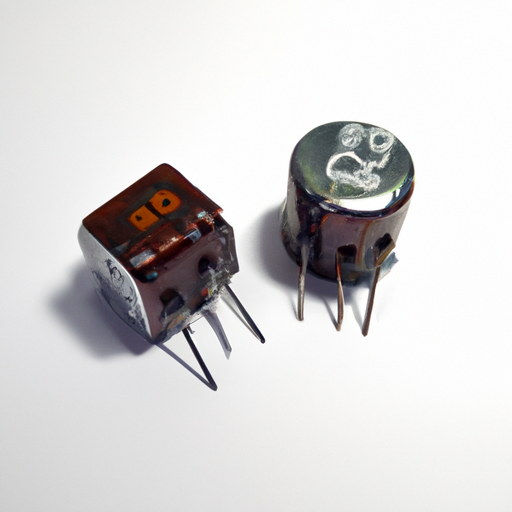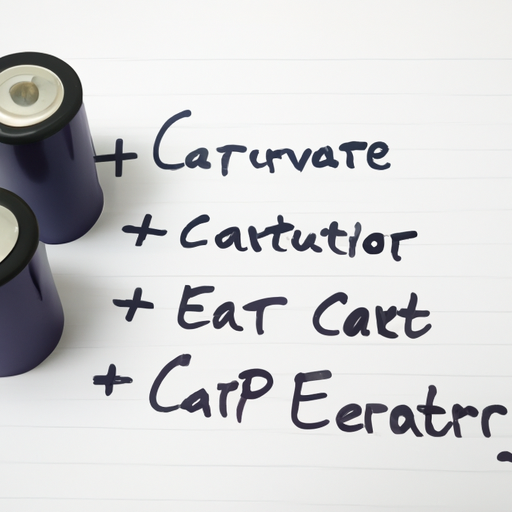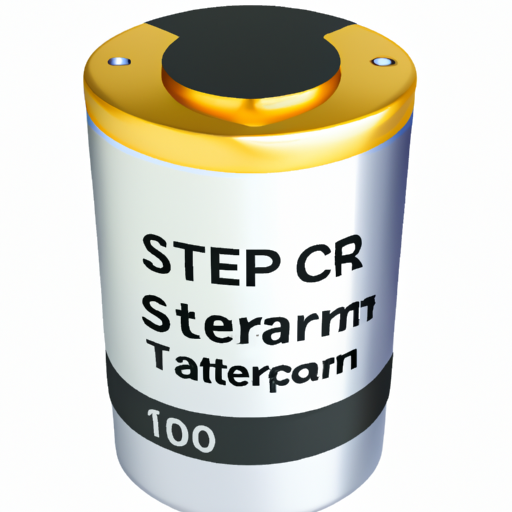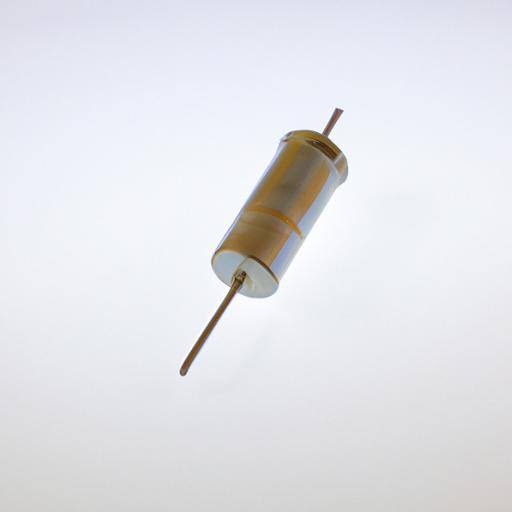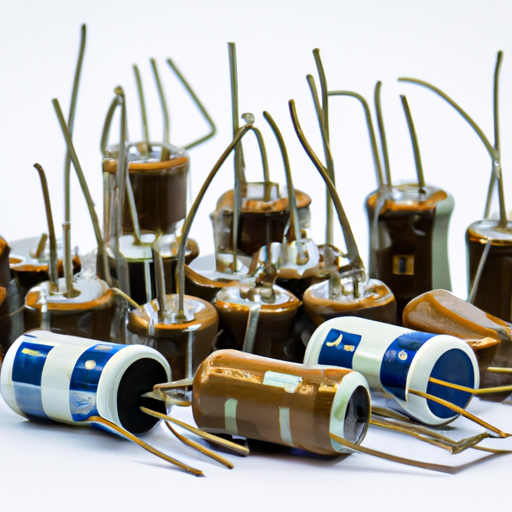Product Standards for Series Capacitors
I. Introduction
A. Definition of Series Capacitors
Series capacitors are electrical components that store energy in an electric field, created by the separation of electric charges. When connected in series with a load, they can enhance the performance of electrical circuits by improving voltage stability and reducing losses. Unlike shunt capacitors, which are connected parallel to the load, series capacitors are integrated into the circuit path, affecting the overall impedance and phase angle of the system.
B. Importance of Product Standards
Product standards are essential in ensuring the safety, reliability, and performance of electrical components, including series capacitors. These standards provide guidelines for design, manufacturing, testing, and application, helping manufacturers produce high-quality products that meet industry requirements. Compliance with these standards not only protects consumers but also fosters innovation and competition in the market.
C. Overview of the Document
This blog post will explore the product standards for series capacitors, detailing the regulatory bodies involved, key standards, testing methods, and emerging trends in capacitor technology. By understanding these aspects, manufacturers and users can ensure the effective application of series capacitors in various electrical systems.
II. Understanding Series Capacitors
A. Basic Principles of Capacitors
1. Functionality
Capacitors function by storing electrical energy in an electric field, which is created when a voltage is applied across their terminals. The amount of energy stored is proportional to the capacitance value, measured in farads (F). When the voltage is removed, the capacitor can release the stored energy back into the circuit, making it a crucial component in various applications, including filtering, timing, and energy storage.
2. Types of Capacitors
There are several types of capacitors, including ceramic, electrolytic, film, and tantalum capacitors. Each type has unique characteristics that make it suitable for specific applications. Series capacitors are often used in power systems to improve voltage regulation and enhance the efficiency of transmission lines.
B. Role of Series Capacitors in Electrical Circuits
1. Applications in Power Systems
In power systems, series capacitors are primarily used to increase the transmission capacity of power lines. By reducing the overall reactance of the line, they allow for more efficient power transfer over long distances. Additionally, series capacitors can help mitigate voltage drops and improve the stability of the grid.
2. Benefits of Using Series Capacitors
The use of series capacitors offers several benefits, including improved voltage stability, reduced losses, and enhanced system reliability. They can also help in managing reactive power, which is essential for maintaining the quality of electrical supply.
III. Regulatory Bodies and Standards Organizations
A. Overview of Key Organizations
1. International Electrotechnical Commission (IEC)
The IEC is a global organization that develops and publishes international standards for electrical and electronic technologies. Their standards ensure the safety and efficiency of electrical components, including capacitors.
2. Institute of Electrical and Electronics Engineers (IEEE)
IEEE is a leading organization in the development of standards for electrical and electronic systems. Their guidelines help ensure the reliability and performance of electrical components, including series capacitors.
3. Underwriters Laboratories (UL)
UL is an independent safety certification organization that tests and certifies products for safety and performance. Their standards for capacitors ensure that products meet rigorous safety requirements.
4. American National Standards Institute (ANSI)
ANSI oversees the development of voluntary consensus standards for products, services, and systems in the United States. Their standards for capacitors help ensure compatibility and safety in electrical applications.
B. Importance of Compliance with Standards
Compliance with product standards is crucial for manufacturers and users alike. It ensures that products are safe, reliable, and perform as intended. Additionally, adherence to standards can enhance a company's reputation and facilitate market access.
IV. Key Product Standards for Series Capacitors
A. IEC Standards
1. IEC 60871 - Shunt Capacitors for Power Systems
This standard specifies the requirements for shunt capacitors used in power systems, including performance, testing, and safety criteria. While primarily focused on shunt capacitors, it provides valuable insights into the design and application of capacitors in power systems.
2. IEC 60384 - Fixed Capacitors for Use in Electronic Equipment
IEC 60384 outlines the requirements for fixed capacitors used in electronic equipment, including series capacitors. It covers aspects such as electrical characteristics, testing methods, and environmental considerations.
B. IEEE Standards
1. IEEE 18 - Standard for Shunt Power Capacitors
This standard provides guidelines for the application and testing of shunt power capacitors, including those used in series configurations. It addresses performance criteria, installation practices, and maintenance recommendations.
2. IEEE 1036 - Guide for the Application of Shunt Capacitors
IEEE 1036 offers guidance on the application of shunt capacitors in power systems, including their use in series configurations. It discusses the benefits, limitations, and best practices for integrating capacitors into electrical systems.
C. UL Standards
1. UL 810 - Capacitors
UL 810 establishes safety requirements for capacitors, including series capacitors. It covers aspects such as construction, performance, and testing to ensure that capacitors are safe for use in various applications.
2. UL 1414 - Capacitors for Use in Power Conversion Equipment
This standard specifies the requirements for capacitors used in power conversion equipment, including series capacitors. It addresses safety, performance, and testing criteria to ensure reliable operation.
D. ANSI Standards
1. ANSI C37.99 - Application Guide for Power Capacitors
ANSI C37.99 provides guidance on the application of power capacitors, including series capacitors. It covers installation practices, performance criteria, and maintenance recommendations.
2. ANSI C37.60 - Standard for Power Capacitor Equipment
This standard outlines the requirements for power capacitor equipment, including series capacitors. It addresses safety, performance, and testing criteria to ensure reliable operation in power systems.
V. Key Parameters and Testing Methods
A. Electrical Characteristics
1. Capacitance Value
The capacitance value is a critical parameter that determines the amount of energy a capacitor can store. It is essential to select capacitors with the appropriate capacitance for the specific application to ensure optimal performance.
2. Voltage Rating
The voltage rating indicates the maximum voltage a capacitor can withstand without failure. It is crucial to choose capacitors with a voltage rating that exceeds the maximum operating voltage of the circuit to prevent breakdown.
3. Ripple Current Rating
The ripple current rating specifies the maximum alternating current that a capacitor can handle without overheating. This parameter is essential for applications involving fluctuating currents, such as in power electronics.
B. Environmental Considerations
1. Temperature Range
Capacitors must operate effectively within a specified temperature range. Exceeding this range can lead to reduced performance or failure. It is essential to select capacitors rated for the expected operating conditions.
2. Humidity and Moisture Resistance
Capacitors must be resistant to humidity and moisture to prevent degradation and failure. Manufacturers often specify environmental ratings to ensure reliability in various conditions.
C. Mechanical Properties
1. Size and Form Factor
The size and form factor of capacitors are critical for installation and integration into electrical systems. Manufacturers must provide dimensions and mounting options to facilitate proper installation.
2. Mounting and Installation Requirements
Proper mounting and installation are essential for the reliable operation of capacitors. Manufacturers should provide guidelines for installation practices to ensure optimal performance.
D. Testing Methods
1. Dielectric Strength Testing
Dielectric strength testing evaluates a capacitor's ability to withstand high voltages without breakdown. This test is crucial for ensuring the safety and reliability of capacitors in electrical systems.
2. Insulation Resistance Testing
Insulation resistance testing measures the resistance of the capacitor's insulation to prevent leakage currents. This test is essential for ensuring the safety and performance of capacitors.
3. Endurance Testing
Endurance testing evaluates a capacitor's performance over time under specified conditions. This test helps assess the long-term reliability and durability of capacitors in various applications.
VI. Quality Assurance and Reliability
A. Importance of Quality Control
Quality control is essential in the manufacturing process of series capacitors. Implementing rigorous quality assurance measures ensures that products meet the required standards and perform reliably in their intended applications.
B. Reliability Testing Standards
1. Accelerated Life Testing
Accelerated life testing simulates the aging process of capacitors under controlled conditions to predict their lifespan. This testing helps manufacturers identify potential failure modes and improve product reliability.
2. Failure Rate Analysis
Failure rate analysis assesses the reliability of capacitors by analyzing historical failure data. This analysis helps manufacturers identify trends and improve design and manufacturing processes.
C. Certification Processes
Certification processes ensure that capacitors meet industry standards and regulations. Obtaining certification from recognized organizations enhances product credibility and market acceptance.
VII. Emerging Trends and Future Directions
A. Advances in Capacitor Technology
Recent advancements in capacitor technology, such as the development of new materials and manufacturing techniques, are leading to improved performance and reliability. These innovations are driving the evolution of series capacitors in various applications.
B. Impact of Renewable Energy Sources
The increasing integration of renewable energy sources, such as solar and wind, is creating new challenges and opportunities for series capacitors. These components play a crucial role in managing voltage stability and reactive power in renewable energy systems.
C. Evolving Standards and Regulations
As technology evolves, so do the standards and regulations governing electrical components. Manufacturers must stay informed about changes in standards to ensure compliance and maintain product quality.
VIII. Conclusion
A. Summary of Key Points
In summary, product standards for series capacitors are essential for ensuring safety, reliability, and performance in electrical systems. Understanding the key standards, testing methods, and regulatory bodies involved is crucial for manufacturers and users alike.
B. Importance of Adhering to Standards
Adhering to product standards not only protects consumers but also fosters innovation and competition in the market. Manufacturers that prioritize compliance can enhance their reputation and gain a competitive edge.
C. Future Outlook for Series Capacitors
As technology continues to advance and the demand for efficient electrical systems grows, the role of series capacitors will become increasingly important. By staying informed about emerging trends and evolving standards, manufacturers can ensure the continued success of their products in the marketplace.
IX. References
A. List of Standards and Guidelines
1. IEC 60871
2. IEC 60384
3. IEEE 18
4. IEEE 1036
5. UL 810
6. UL 1414
7. ANSI C37.99
8. ANSI C37.60
B. Relevant Literature and Research Articles
- Articles on capacitor technology advancements
- Research on the impact of renewable energy on power systems
C. Industry Resources and Websites
- International Electrotechnical Commission (IEC)
- Institute of Electrical and Electronics Engineers (IEEE)
- Underwriters Laboratories (UL)
- American National Standards Institute (ANSI)
This comprehensive overview of product standards for series capacitors highlights the importance of adhering to established guidelines to ensure safety, reliability, and performance in electrical systems. By understanding these standards, manufacturers and users can make informed decisions that enhance the effectiveness of their applications.


